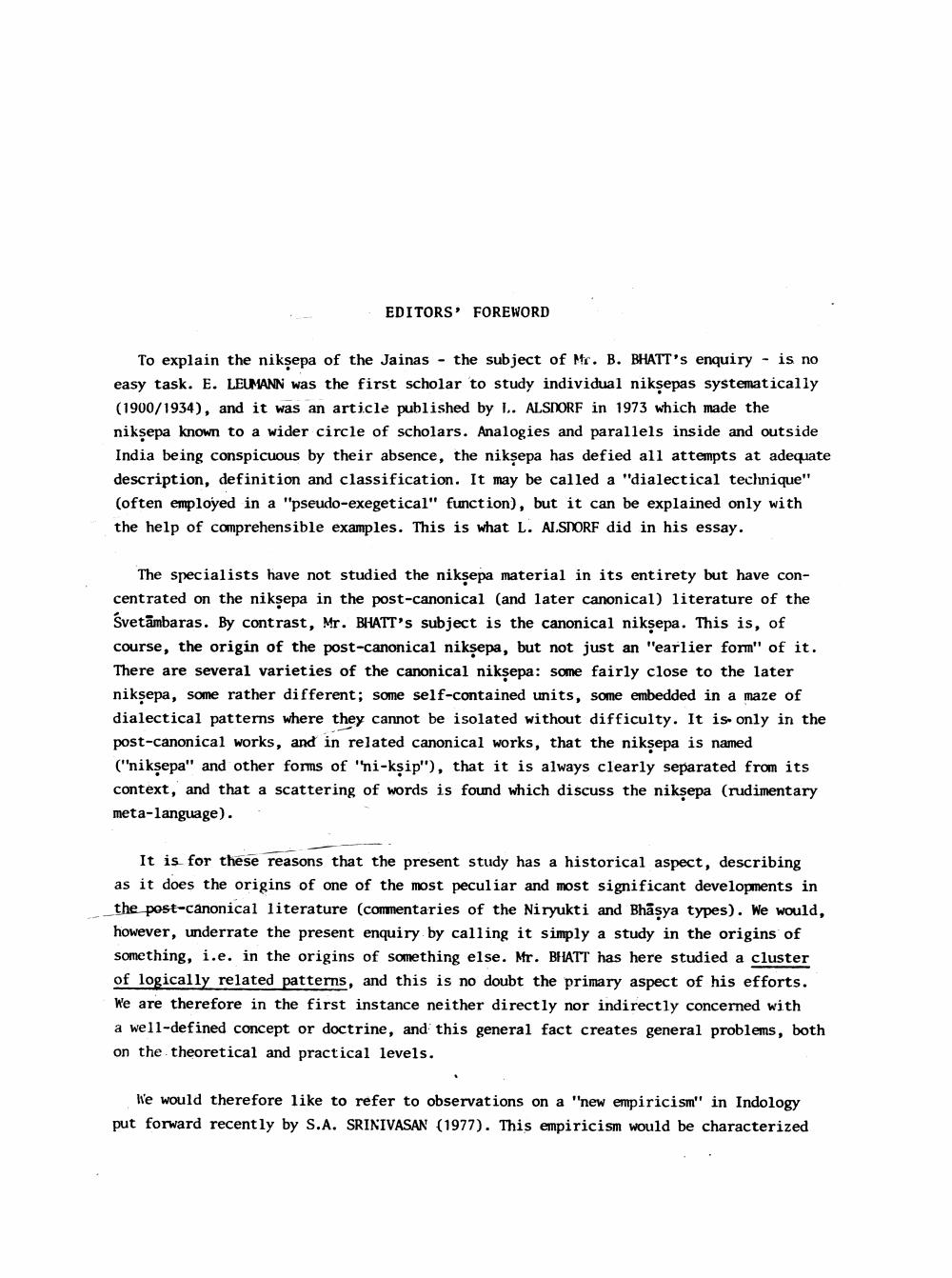Book Title: Canonical Niksepa Author(s): Bansidhar Bhatt Publisher: Bharatiya Vidya Prakashan View full book textPage 6
________________ EDITORS' FOREWORD To explain the niksepa of the Jainas - the subject of Mr. B. BHATT's enquiry - is no easy task. E. LELMANN was the first scholar to study individual niksepas systematically (1900/1934), and it was an article published by L. ALSDORF in 1973 which made the niksepa known to a wider circle of scholars. Analogies and parallels inside and outside India being conspicuous by their absence, the niksepa has defied all attempts at adequate description, definition and classification. It may be called a "dialectical technique" (often employed in a "pseudo-exegetical" function), but it can be explained only with the help of comprehensible examples. This is what L. ALSDORF did in his essay. The specialists have not studied the niksepa material in its entirety but have concentrated on the niksepa in the post-canonical (and later canonical) literature of the Svetāmbaras. By contrast, Mr. BHATT's subject is the canonical niksepa. This is, of course, the origin of the post-canonical niksepa, but not just an "earlier form" of it. There are several varieties of the canonical niksepa: some fairly close to the later niksepa, some rather different; some self-contained units, some embedded in a maze of dialectical patterns where they cannot be isolated without difficulty. It is only in the post-canonical works, and in related canonical works, that the niksepa is named ("niksepa" and other forms of "ni-kşip"), that it is always clearly separated from its context, and that a scattering of words is found which discuss the niksepa (rudimentary meta-language). It is for these reasons that the present study has a historical aspect, describing as it does the origins of one of the most peculiar and most significant developments in the post-canonical literature (commentaries of the Niryukti and Bhāşya types). We would, however, underrate the present enquiry by calling it simply a study in the origins of something, i.e. in the origins of something else. Mr. BHATT has here studied a cluster of logically related patterns, and this is no doubt the primary aspect of his efforts. We are therefore in the first instance neither directly nor indirectly concerned with a well-defined concept or doctrine, and this general fact creates general problems, both on the theoretical and practical levels. We would therefore like to refer to observations on a "new empiricism" in Indology put forward recently by S.A. SRINIVASAN (1977). This empiricism would be characterizedPage Navigation
1 ... 4 5 6 7 8 9 10 11 12 13 14 15 16 17 18 19 20 21 22 23 24 25 26 27 28 29 30 31 32 33 34 35 36 37 38 39 40 41 42 43 44 45 46 47 48 49 50 51 52 53 54 55 56 57 58 59 60 61 62 ... 192
